Just prior to their marriage Stewart Granger had bought his future wife this now iconic car – a Bristol 402. This was back in 1949
In 1949, Stewart Granger and Jean Simmons were two major film stars
The British couple – who married just 12 months later – acted alongside each other in films including Adam and Evelyne, Young Bess and Footsteps in the Fog but also bought a pair of matching cars.
One of those two vehicle is going to be sold and is being offered to the highest bidder next month, with Jean Simmons’ Bristol 402 – one of just 24 built and 12 known to have survived – and it is going under the hammer at a UK auction, with experts predicting a sale figure of £200,000.
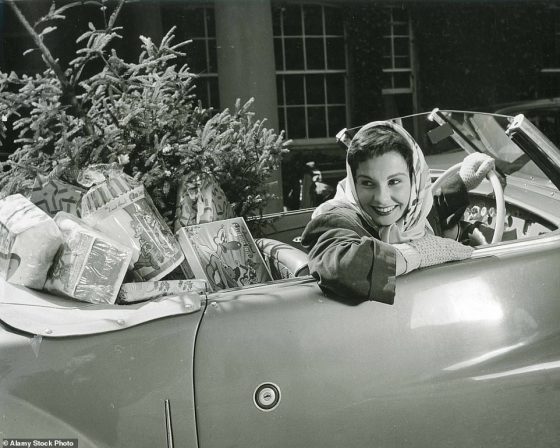

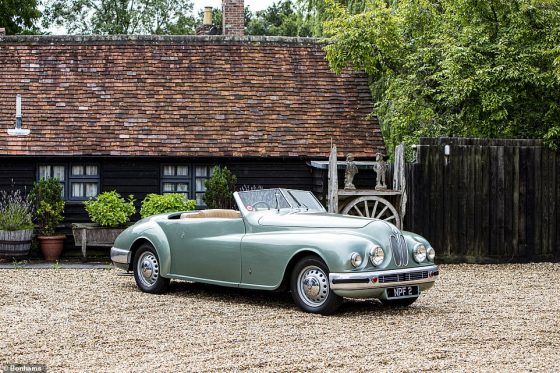
The two cars were bought from Surrey car dealer Tony Crook, who later went on the spearhead the Bristol Cars marque. Each one cost £3,500, which was around the same price as a decent-size family home at the time.
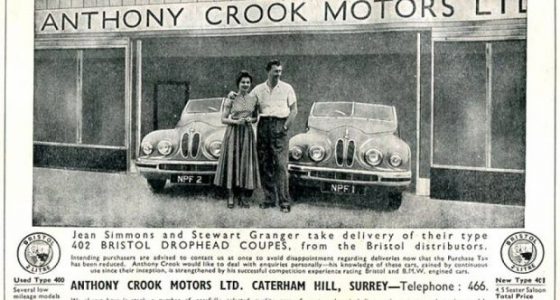
The couple used the matching cars extensively to promote 1949 romantic hit, Adam and Evelyne, in which they starred together.
Jean Simmons drove the car regularly while living in Surrey but eventually left as her fame rose and moved to Hollywood.
While filming Caesar and Cleopatra, Jean Simmons had developed a crush on Stewart Granger, and they later became sweethearts, though Granger was 16 years older and married. In 1949 he suggested they star together in
Adam and Evelyne, in which a penniless orphan is raised with the support of a mysterious benefactor. It proved a perfect showcase for the couple, and demonstrated Simmons’ expert handling of romantic comedy.
Stewart Granger departed for Hollywood later in 1949 after being signed by MGM, and in 1950 Simmons joined him when cast by Gabriel Pascal in a screen version of Shaw’s Androcles and the Lion with Victor Mature – he was later with her again in ‘The Robe’ where he gave a superb performance.
Stewart Granger and the actress Elspeth March had divorced in 1948, and in December 1950 he and Jean Simmons eloped to Tucson. That same year she had been in four British films, all successful. In So Long at the Fair, Trio, Cage of Gold and The Clouded Yellow.
In 1952 Jean Simmons signed a non-exclusive contract with 20th Century-Fox. She immediately starred in three prestigious movies. In MGM’s Young Bess (1953) she was a radiant Queen Elizabeth I; in The Actress (1953), based on the autobiography of actress-writer Ruth Gordon, she was a stage-struck teenager, buoyed by the fine performances of Spencer Tracy and Teresa Wright as her parents. Jean adored Spencer Tracy as both actor and friend, and The Actress was to remain her personal favourite of her films, partly because working with him was “sheer heaven”. She and Stewart Granger were to name their daughter Tracy after him.
I always felt that it was this that sparked the number of girls being called ‘Tracy’ at the time
Jean Simmons was one of the great beauties of British cinema, and she had a talent to match. She played Ophelia to Laurence Olivier’s Hamlet (1948) when only 18, and won her first Oscar nomination.
Early roles included her memorable cold young heart-breaker Estella in David Lean’s Great Expectations (1946), disdainfully advising young Pip, “You may kiss me now if you wish”.
She was slave girl in Black Narcissus (1947) but it was not the major part be any means
In 1950 she topped a poll as the most popular British actress. Shortly afterwards, she went to Hollywood, where she and Deborah Kerr were the only two British actresses of the time to achieve truly international stardom – a few years later they were joined by the Anglo-Dutch Audrey Hepburn. Her first marriage, to the actor Stewart Granger, ended in 1960 when she divorced him to marry director Richard Brooks, who later recalled, “Every man I would meet would say to me, ‘I have always loved your wife.'”
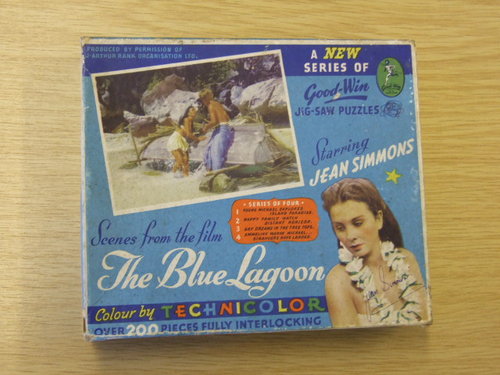
When I remember the films of Jean Simmons – the one that comes to mind immediately is ‘The Blue Lagoon’ filmed in Technicolor in Fiji where she played one of two youngsters who grow up shipwrecked on a desert island
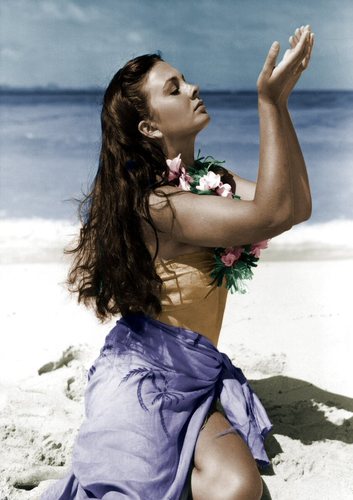
In ‘The Robe’ (1953) she was a Christian in love with a centurion (Richard Burton) who presided over Christ’s crucifixion. Burton confessed to being one of several leading men who fell in love with Simmons but found their advances rejected.
Jean Simmons was one of the great beauties of British cinema, and she was also a talented actress.
Audiences were captivated by Jean Simmons from the moment she first appeared on the screen, climbing on to a dance band stand to sing a spirited “Let Him Go, Let Him Tarry” in the popular movie about the RAF in wartime, The Way to the Stars (1945), and she was to swiftly become one of the UK’s biggest box-office draws.
Place your comment